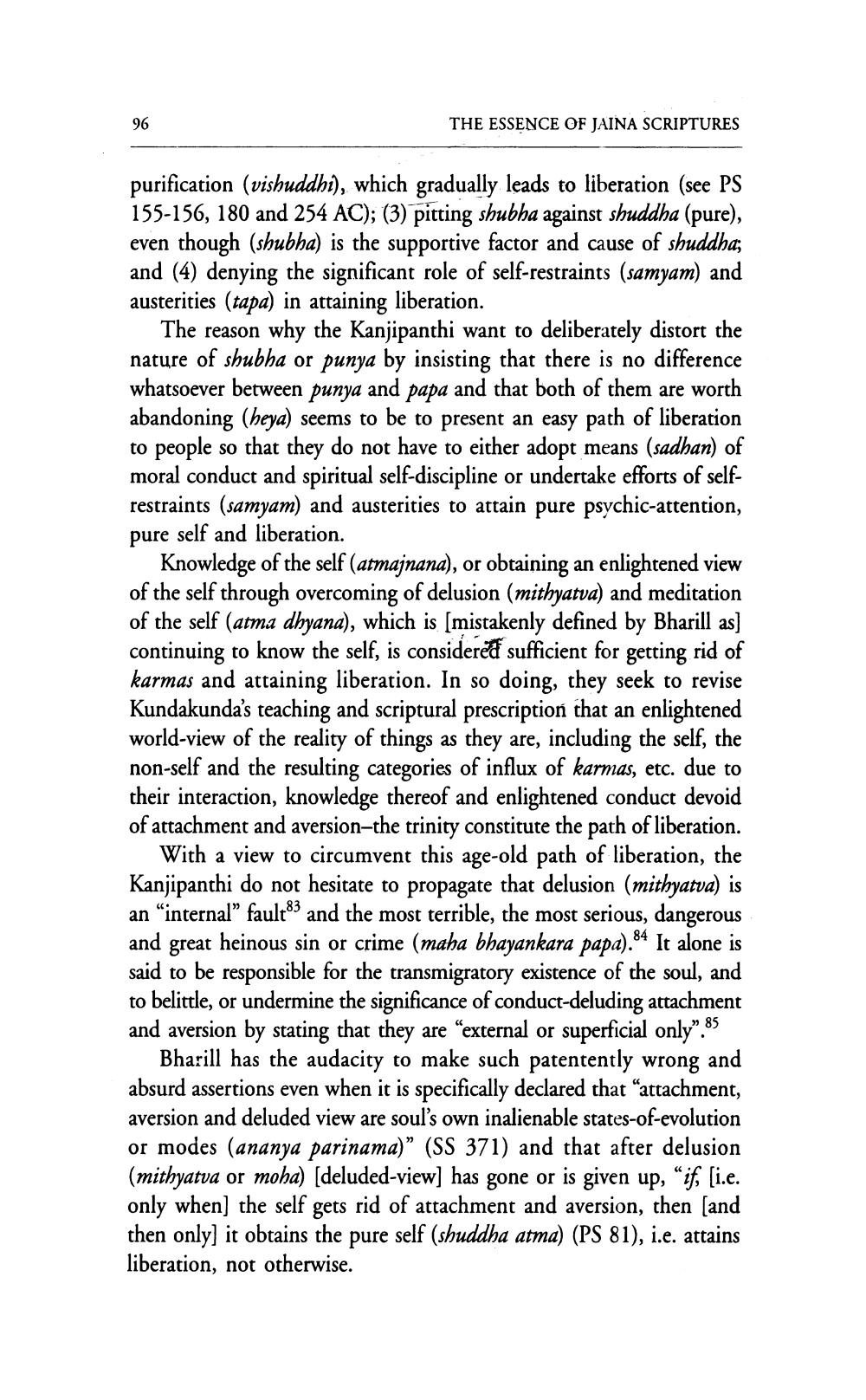________________
THE ESSENCE OF JAINA SCRIPTURES
purification (vishuddhi), which gradually leads to liberation (see PS 155-156, 180 and 254 AC); (3) pitting shubha against shuddha (pure), even though (shubha) is the supportive factor and cause of shuddha; and (4) denying the significant role of self-restraints (samyam) and austerities (tapa) in attaining liberation.
The reason why the Kanjipanthi want to deliberately distort the nature of shubha or punya by insisting that there is no difference whatsoever between punya and papa and that both of them are worth abandoning (heya) seems to be to present an easy path of liberation to people so that they do not have to either adopt means (sadhan) of moral conduct and spiritual self-discipline or undertake efforts of selfrestraints (samyam) and austerities to attain pure psychic-attention, pure self and liberation.
Knowledge of the self (atmajnana), or obtaining an enlightened view of the self through overcoming of delusion (mithyatva) and meditation of the self (atma dhyana), which is (mistakenly defined by Bharill as] continuing to know the self, is considered sufficient for getting rid of karmas and attaining liberation. In so doing, they seek to revise Kundakunda's teaching and scriptural prescription that an enlightened world-view of the reality of things as they are, including the self, the non-self and the resulting categories of influx of karmas, etc. due to their interaction, knowledge thereof and enlightened conduct devoid of attachment and aversion-the trinity constitute the path of liberation.
With a view to circumvent this age-old path of liberation, the Kanjipanthi do not hesitate to propagate that delusion (mithyatva) is an "internal” fault#3 and the most terrible, the most serious, dangerous and great heinous sin or crime (maha bhayankara papa).84 It alone is said to be responsible for the transmigratory existence of the soul, and to belittle, or undermine the significance of conduct-deluding attachment and aversion by stating that they are "external or superficial only”.85
Bharill has the audacity to make such patentently wrong and absurd assertions even when it is specifically declared that "attachment, aversion and deluded view are soul's own inalienable states-of-evolution or modes (ananya parinama)" (SS 371) and that after delusion (mithyatva or moha) (deluded-view] has gone or is given up, “if, (i.e. only when] the self gets rid of attachment and aversion, then (and then only) it obtains the pure self (shuddha atma) (PS 81), i.e. attains liberation, not otherwise.




